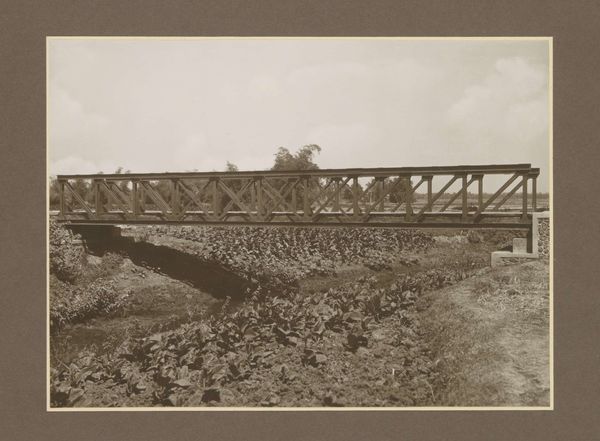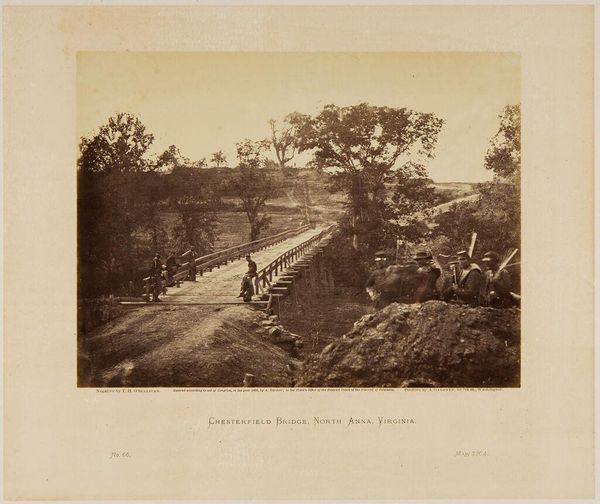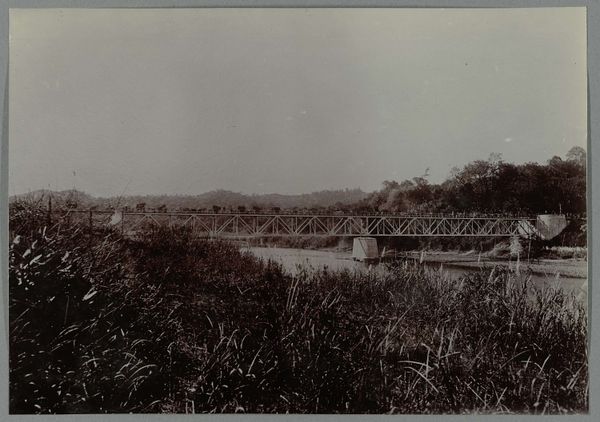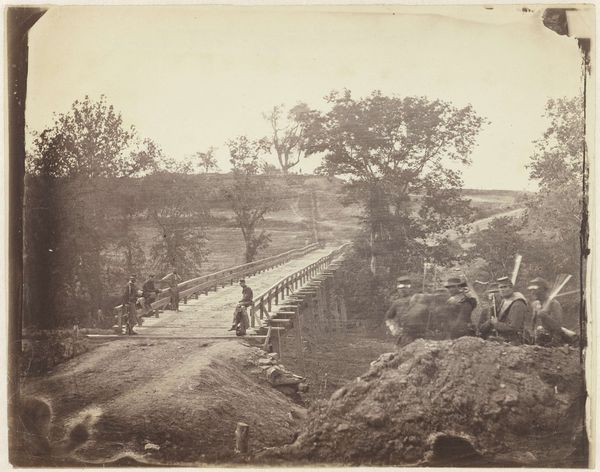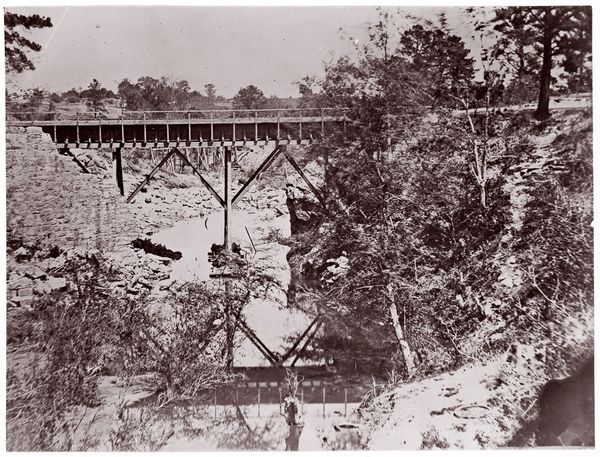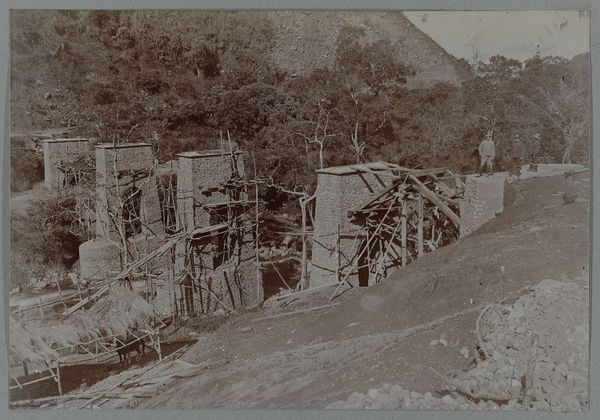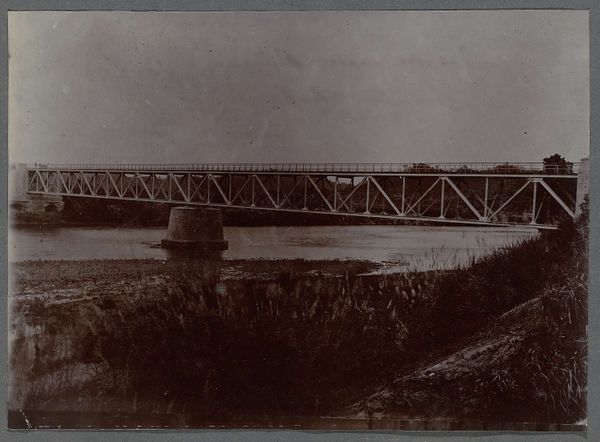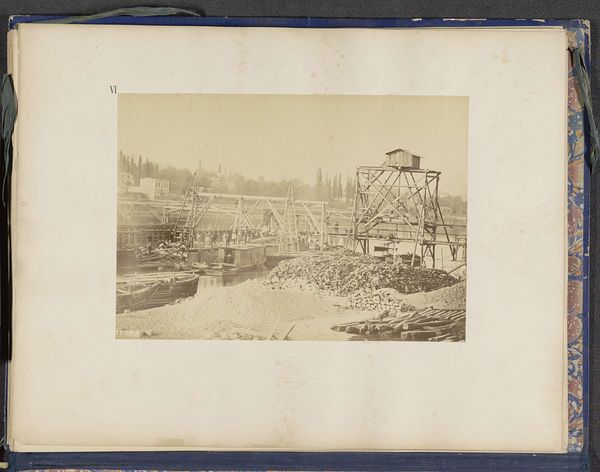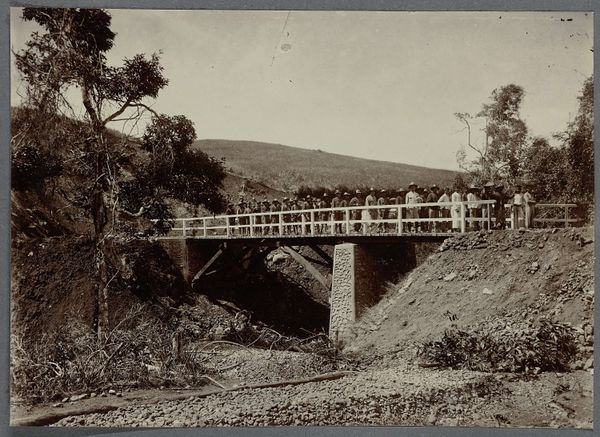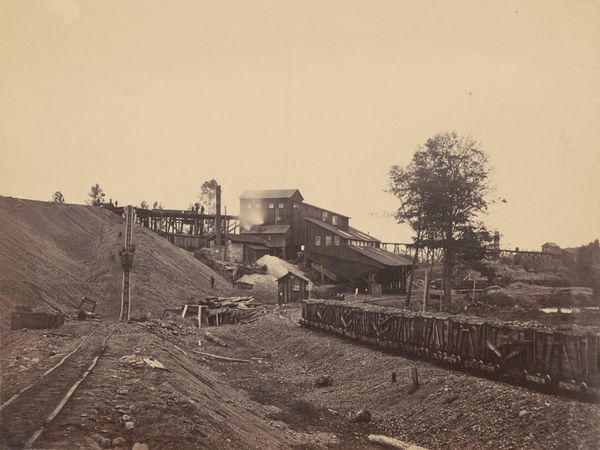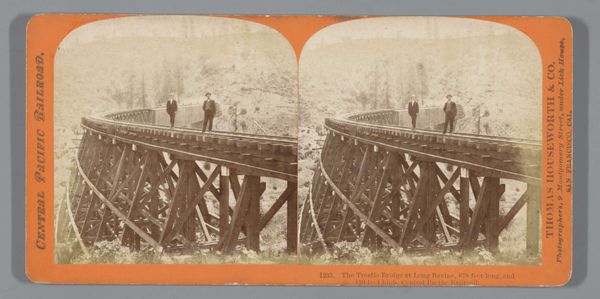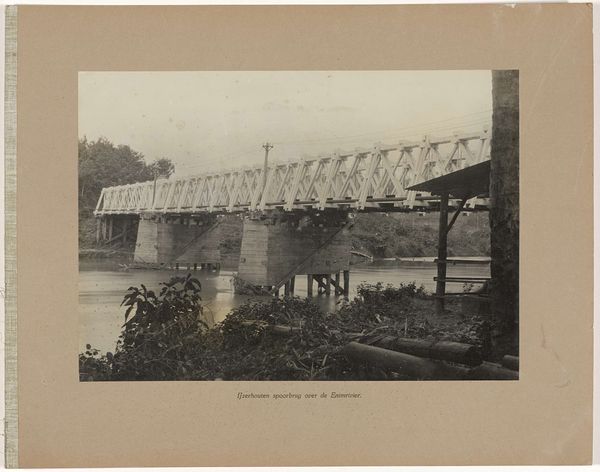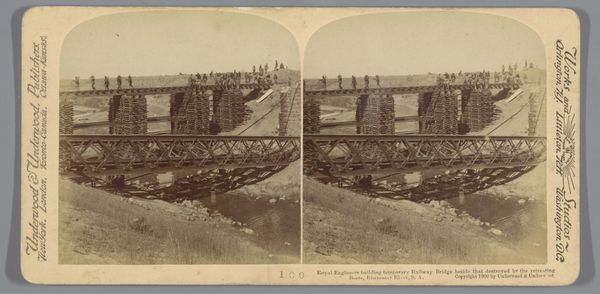
Bridge on Orange and Alexandria Rail Road, as Repaired by Army Engineers under Colonel Herman Haupt 1865
0:00
0:00
photography, gelatin-silver-print
#
war
#
landscape
#
photography
#
gelatin-silver-print
#
19th century
#
men
#
history-painting
Copyright: Public Domain
Curator: This gelatin silver print, taken in 1865, is titled "Bridge on Orange and Alexandria Rail Road, as Repaired by Army Engineers under Colonel Herman Haupt" by Andrew Joseph Russell. Editor: My initial impression is one of fragility juxtaposed with immense power. Look at the delicate wooden trestle bridge seemingly straining under the weight of that imposing locomotive. It really captures a precarious moment in time. Curator: Precisely. What's fascinating is the speed and efficiency of wartime engineering. Bridges like these were vital for supplying troops and moving resources. Think of the sheer volume of materials, the felling of trees, the sawing of lumber, and the forging of iron—all orchestrated to keep the war machine running. Editor: And Russell, by framing this bridge, elevates the ordinary work of the army engineers. He underscores the vital yet often overlooked role of infrastructure in military campaigns and their political impact. The train isn't just carrying goods; it represents the reach and the power of the Union. Curator: Indeed, the labor is embedded in every timber and nail of this makeshift structure. They’re literally rebuilding in the middle of a war. It’s a fascinating example of military necessity driving innovation and, more broadly, reflecting American ingenuity. It asks us to reconsider notions of value. Editor: And consider the message to a divided nation. This photograph served as propaganda, evidence of restored order and control and even evidence to the economic dominance. It offered an illusion of permanence during times of chaos. What do you think its presence says in a place like The Met? Curator: In the modern setting of a museum, a piece of industrial technology becomes monumental. I find it interesting how photography creates a sense of art from functionality, almost forcing us to ponder its societal role within both militaristic objectives and the world of labor. Editor: It prompts us to consider art's function during times of great socio-political shifts. Thanks for lending insight. Curator: My pleasure, I’ve appreciated the reflection on engineering and historical perspectives that are embedded within the tangible details.
Comments
No comments
Be the first to comment and join the conversation on the ultimate creative platform.
